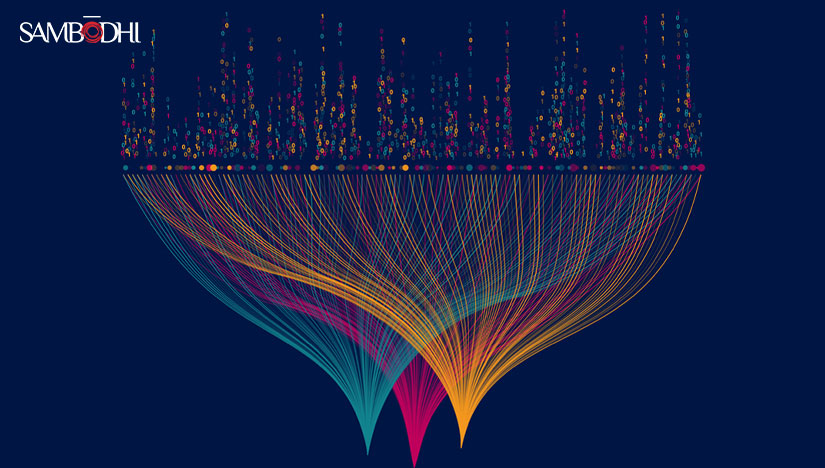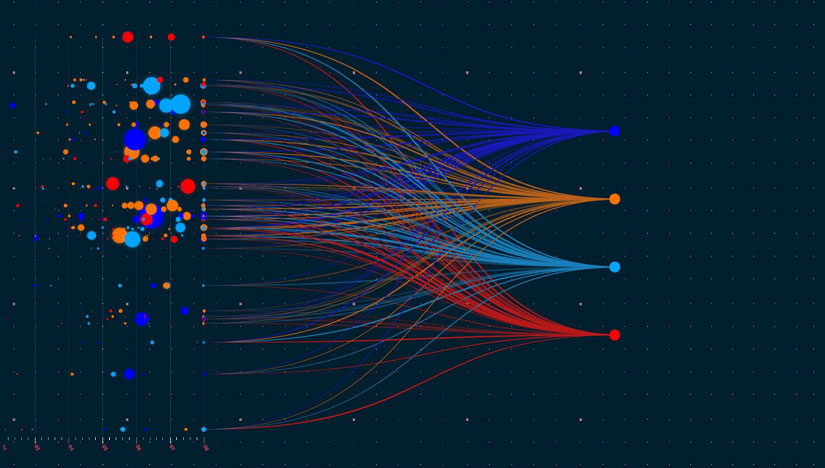Structured and Unstructured Data: The Concept and Analytics

Data of distinct types and natures surround us, and this variety in structure gives data its richness. Data can be segmented into two broad categories: structured and unstructured.
So, what is structured data and unstructured data, and what are their differences? The subsequent section discusses the aspect of both structured and unstructured data in detail.
Structured Data
Structured data is the most prevalent data type. Humans have relied on structure data for most of their existence. It refers to predefined, formatted information that is predetermined before storing it.
A relational database can illustrate the structure of data. The data in a relational database is organized into columns that can be accessed using SQL queries, such as numbers and addresses.
Unstructured Data
Data that is unstructured is stored in its native format and isn’t processed until it is read, a process called schema-on-read. It consists of email, social media posts, presentations, chats, IoT (Internet of Things) sensor data, and satellite photography.
Unlike structured data, unstructured data cannot be easily entered into Excel spreadsheets. The global data market is dominated by unstructured data, representing around 80% of all data. We couldn’t analyze this data in the past, so instead, we focused on the data we could count and organize efficiently.
The key differences between structured data and unstructured data
- Structured data is generated by surveys, online forms, web server logs, etc. In contrast, unstructured data is generated by email messages, word processing papers, PDF files, etc.
- Unstructured data includes sensors, text files, audio, and video files, while structured data includes numbers and values.
- Text mining and natural language processing use unstructured data, while machine learning algorithms utilize structured data.

Storage And Analytical Option
We can store structured data in a rows-and-columns database, but unstructured data cannot be held that way. Structured data is stored in table formats such as Excel spreadsheets or SQL databases that require less storage space. It can be kept in data warehouses, making it highly scalable.
Unstructured data, such as photos and movies, satellite images, and various machine-generated films, is also a significant structural deterrent. XML files, JSON files, etc., fall within the category of semi-structured data.
While structured data has a clearly defined storage format, unstructured data has no clear format in storage. A more straightforward database or data warehouse can store structured data. In contrast, unstructured data is saved as media files or NoSQL databases, which demand more significant storage space. Instead of rows and columns, NoSQL databases store data in JSON documents.
To clarify, NoSQL means not only SQL, which implies that a NoSQL JSON database may store and retrieve data without utilizing SQL, or one can mix the freedom of JSON with the power of SQL.
Data lakes store unstructured data without any structure issues, so we can keep all our photographs in our Cloud library and use artificial intelligence to find photos with specific people or animals. The AI will then analyze these folders and extract the relevant information.
With the advent of social media, it is possible to analyze posts and comments, where automated systems can determine your mood, sentiment, and what you are talking about. Several companies have made impressive advancements in image recognition technology, which can be automated.
Another prominent source of unstructured data, specifically in survey research, is an open-ended question. As technology advances, methodologies are available for analyzing this data. Artificial intelligence and advanced analytics allow a brand to discover how people discuss it.
Tools For Structured and Unstructured Data
| Structured data | Unstructured data |
| MySQL integrates data into widely distributed applications, especially mission-critical, high-volume production systems. | MongoDB processes data for cross-platform applications and services using flexible documents. |
| PostgreSQL supports SQL, JSON, and high-level programming languages, i.e., C/C+, Java, Python, etc. | DynamoDB provides sub-millisecond speed at any scale with built-in security, in-memory caching, and backup and restoration capabilities. |
| Hadoop enables the distributed processing of massive data collections with simple programming models and no formatting constraints. Additionally, Azure enables agile cloud computing to develop and manage applications using Microsoft’s data centres. |
Semi-Structured Data
Semi-structured data is another way we can classify data. It is challenging to categorize semi-structured data since it sometimes appears structured and sometimes looks unstructured. For this reason, this data is known as semi-structured data.
A semi-structured data set bridges the gap between structured and unstructured information. There is no preset data model for this type of data, and it is more complex than structured data. However, it is more accessible to store than unstructured data. Usually, it uses metadata and semantic markers to find characteristics that enable it to scale data into predetermined fields and records.
In the end, metadata makes it possible to classify, search, and analyze semi-structured data more efficiently than unstructured data.
Kultar Singh – Chief Executive Officer, Sambodhi
Leave a Reply
You must be logged in to post a comment.

